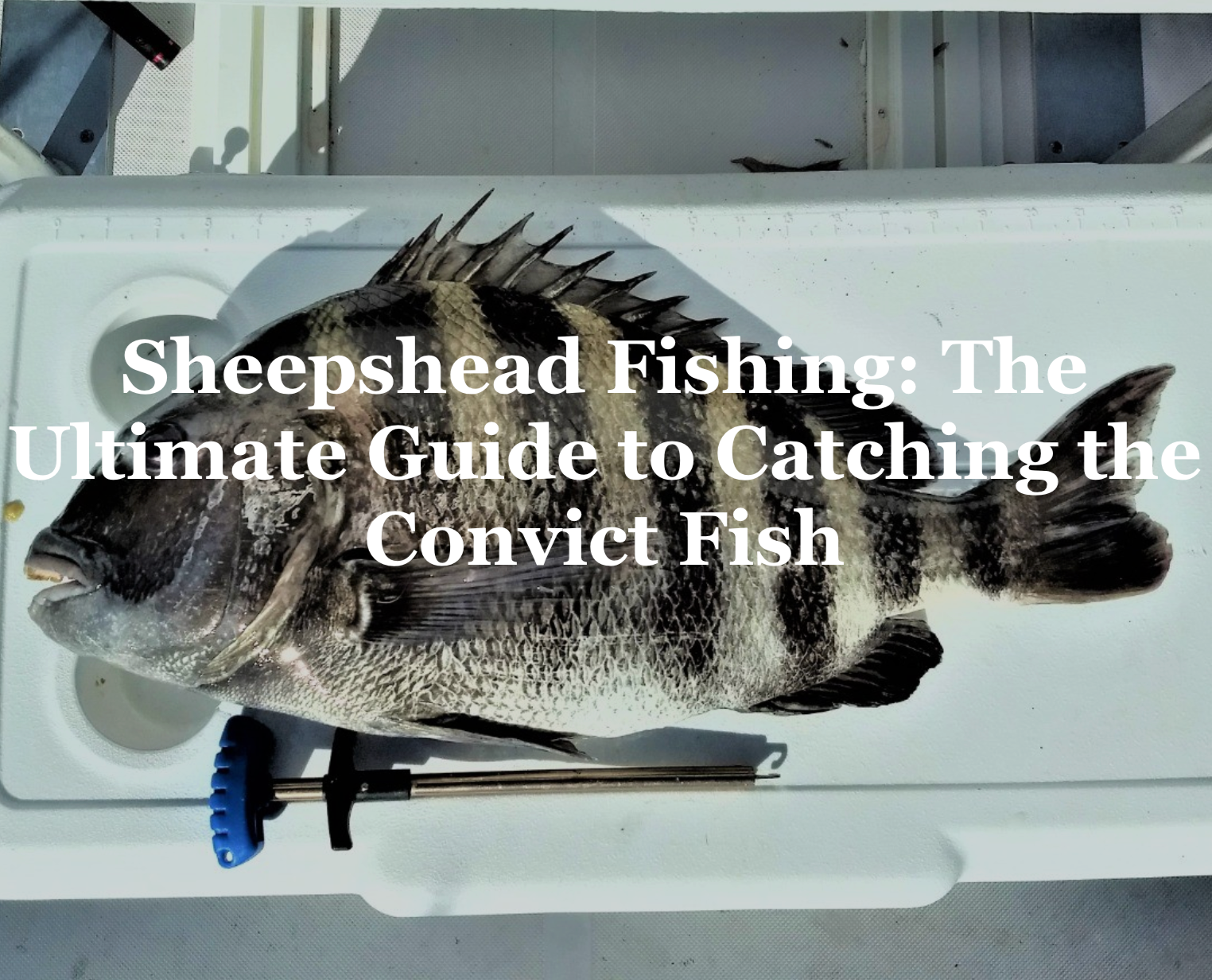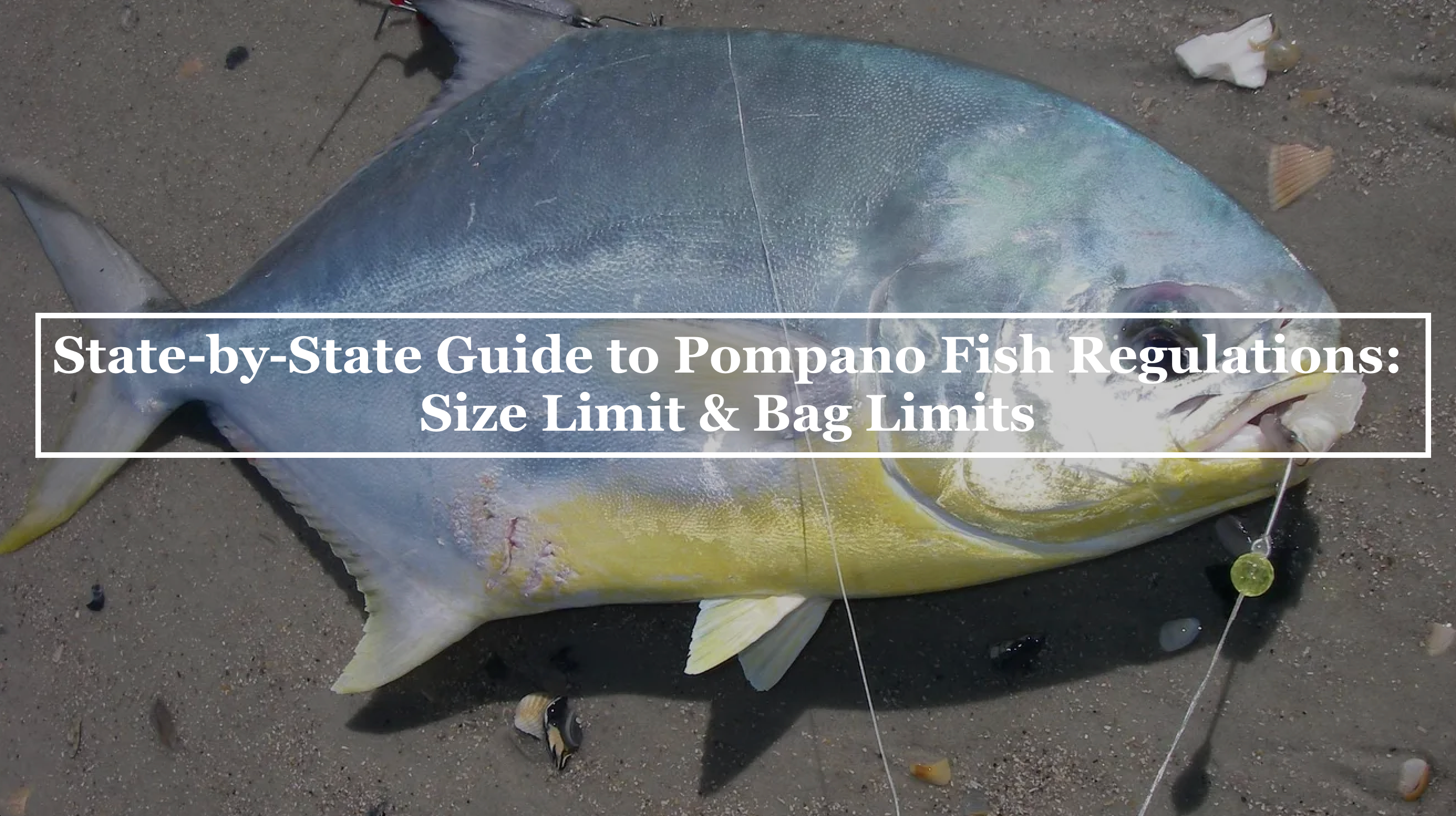Embarking on the adventure of crabbing can lead you to some of the most delectable and satisfying rewards the sea has to offer. Whether you are a seasoned shellfish enthusiast or a curious newcomer, the "Ultimate Guide to Crabbing" will equip you with all the knowledge and techniques needed to master the art of how to catch crabs. This ancient practice, steeped in tradition yet evolved with modern methods, offers a unique blend of excitement, patience, and the thrill of the catch that can be enjoyed alone, with friends, or as a family activity.
From understanding the behavior of these elusive crustaceans to selecting the perfect bait and location, we lay out a step-by-step approach that demystifies the process. You'll learn about the different types of crabbing gear—from simple hand lines to sophisticated traps—and the most effective ways to use them. Moreover, we'll delve into the best times of year and tide conditions to ensure your crabbing expedition is fruitful. Complemented by tips on local regulations and how to handle and cook your catch responsibly, our ultimate guide promises to not only improve your crabbing success but also to enhance your appreciation for this rewarding maritime pursuit. Prepare to get your feet wet; adventure awaits in the ebbing waters where the crabs are ripe for the catching.
Crab Catching Basics

Before you dive into the waters, it's crucial to know a few fundamentals about crabbing. Different regions might have varying rules, so it’s important to check local regulations. Generally, you'll need a crabbing license to start, which can usually be obtained from local fishery departments or online government portals.
Choosing the Right Crabbing Gear
Crabbing is a gratifying outdoor activity that connects enthusiasts with the coastal environment and its ecosystem. Essential to a successful crabbing expedition is not just knowledge and technique but also the right gear. Understanding and assembling the correct equipment is your first step towards a fruitful catch. Here’s a comprehensive look at the gear you'll need for crabbing and how to use it effectively.
Crab Traps and Pots
Crab traps, also known as pots, are among the most common equipment used for crabbing. Designed to lure crabs in without letting them escape, these traps come in various shapes and styles, including pyramid, box, and ring designs. Pyramid and box traps rest on the seafloor and are ideal for catching multiple crabs. Ring traps, which lay flat but close up when lifted, are better suited for shallower waters. To use these traps, bait the trap with fish heads, chicken necks, or any robust-smelling meat to attract crabs. Lower your trap into the water, ensuring it sits flat on the bottom, and wait. Check your traps every 15 to 30 minutes for the best results.
Crab Hand Line With Weighted Bait Clip and Dip Nets

For a more hands-on approach, especially in shallower waters, hand lines and dip nets are perfect. A simple setup involves tying a piece of bait to a string or lightweight rope and tossing it into the water, waiting for a crab to grab on. Once you feel tugs on the line, gently pull the crab in, using a dip net to scoop it up as it nears the surface. This method requires patience and a slow, steady hand to prevent the crab from releasing and escaping.
Crab Bait Box or Bait Bag
A bait box or bag is essential to protect your bait from being devoured or dislodged by crabs or other sea creatures. Placing your bait in a secured container within the trap ensures that the scent of the bait disperses into the water, luring crabs in, while keeping the bait intact for longer durations.
Crab Measuring Gauge
A crucial piece of equipment is the crab measuring gauge. This simple tool ensures that you only keep crabs that meet local legal size requirements, helping maintain healthy crab populations. To use, simply place the gauge over the crab’s body, measuring from point to point on the shell. Any crab falling below the minimum size must be gently released back into the water.
Gloves
Crabbing can be hard on the hands, from handling bait to dealing with sharp shells and claws. A sturdy pair of gloves protects you from cuts, punctures, and potential pinches, making the process safer and more comfortable.
Best Bait for Crabbing

Crabbing is both an enjoyable hobby and a culinary pursuit, deeply enriched by the choice of bait used to entice these delectable crustaceans. While crabs are opportunistic feeders, not all bait is created equal. The essence of successful crabbing lies in understanding which baits are most effective and why. Here’s an in-depth exploration of the best baits for crabbing, their distinct advantages, and tips on how to use them.
Chicken Necks for Crab Bait
Chicken necks are a perennial favorite among crabbers for several reasons. Their tough texture makes them resistant to theft by smaller fish, ensuring they stay on your line or in your trap longer. Moreover, chicken necks release oils slowly into the water, creating an irresistible scent trail for crabs. To use chicken necks effectively, secure them tightly in your trap or to your line to prevent crabs from making off with them.
Fish Heads and Carcasses Bait for Crab Fishing
Discarded parts of fish, especially the heads and carcasses, are highly coveted by crabs due to their strong, pervasive scent. Oily fish like mackerel, herring, and salmon are particularly effective because their oils disperse widely in the water, attracting crabs from afar. When using fish heads or carcasses, ensure they are fresh and securely attached to your trap to maximize their allure.
Squid Crab Bait
Squid is another excellent bait, known for its durability and appealing scent. Squid can withstand nibbling from smaller fish and remains on the hook or in the trap longer than softer baits. Its unique aroma and texture make it irresistible to crabs. Cut the squid into strips or use small whole squid to fit your trap or line setup.
Clams and Mussels
Shellfish like clams and mussels emit a potent scent when their shells are cracked open. This scent is highly attractive to crabs, drawing them into traps efficiently. To use clams or mussels, crack their shells before placing them in a bait bag within your trap. Their juices will leak out, creating a scent trail that crabs cannot resist.
Bacon
Bacon, with its strong, fatty aroma, can be an unconventional but effective bait for crabbing. Its high fat content releases oils into the water, similar to oily fish, attracting crabs. Use thick cuts of bacon and secure them tightly in your trap. Although not as commonly used as other baits, bacon can be a surprising alternative that yields success.
Cat and Dog Food
In a pinch, wet cat or dog food can serve as an effective bait due to its strong smell. The convenience of canned pet food makes it an easy option, especially for spontaneous crabbing trips. Secure the can in your trap with holes punched through to release the scent, or place the wet food directly into a bait bag.
Tips for Crab Bait
- Always secure your bait tightly to prevent theft by crabs or other creatures.
- Consider using bait bags or cages within traps to protect your bait while allowing scent distribution.
- Experiment with different baits to see what works best in your crabbing locale, as crab preferences can vary by area.
Best Places to go Crabbing

Crabbing locations are pivotal in determining your success. Coastal areas are popular, but bays, estuaries, and piers can also provide excellent opportunities. Always research the most fruitful areas during the crabbing season, ensuring you are crabbing in not only rich but permissible waters. The best places to go crabbing are often estuaries, piers, docks, and sheltered bays where crabs thrive in brackish waters with a mix of salt and freshwater, offering plentiful nutrients.
Renowned hotspots like the Chesapeake Bay in Maryland and the Oregon Coast garner praise for their abundant blue crab and Dungeness crab populations, respectively. In addition, the coastal waters of states like Louisiana, Washington, and New Jersey are favored for their rich crabbing sites that cater to both novice enthusiasts and seasoned pros.
When scouting for the ideal crabbing location, seek out places with easy water access, bountiful crab habitats, and local regulations that sustain healthy crab populations through responsible fishing practices. As tide, weather, and seasonality affect crabbing success, aspiring crabbers should research and adhere to these factors while enjoying the quieter coves and bustling marina piers that offer some of the best crabbing experiences.
Knowing the Crabbing Laws
Navigating state crabbing laws is as essential to the experience as the act of crabbing itself. Crabbing rules can vary significantly from one location to another. These regulations are designed to protect crab populations, ensure sustainability, and maintain a healthy ecosystem for future generations to enjoy. Each state dictates its own set of rules that might include licensing requirements, size and catch limits, gear restrictions, and specific seasons or hours when crabbing is permitted.
For example, some states may mandate the use of turtle-excluder devices on crab traps to prevent unintended capture of local wildlife. It's imperative for crabbers, whether amateur or seasoned, to stay informed and up-to-date with their state's Department of Fish and Wildlife or Natural Resources regulations. Failure to align with these laws can lead to fines, revoked licenses, or other penalties. Additionally, these rules can change annually or even more frequently, so a responsible crabber should regularly check for updates before heading out. Understanding and respecting local crabbing laws not only supports environmental stewardship but also enriches the fishing community and the local tradition of crabbing.
When is the Best Time for Crabbing?

Timing is a pivotal element in the world of crabbing, with the seasonality of the pursuit largely dependent on the species sought and the geographic area. In numerous locales, the balmy embrace of the summer months marks an ideal period for crabbing, offering warm waters that coax crabs into more active and accessible states. This period, typically extending from late spring through late summer, sees species like the blue crab becoming particularly abundant, making them prime targets for recreational and commercial crabbers alike. However, for enthusiasts aiming to snag species like the Dungeness crab, the chillier waters of late fall through winter might prove more opportune, as these crabs are often most plentiful and large during the colder months. Accordingly, aligning your crabbing expeditions with these peak seasons can dramatically enhance your success rate, filling your pots and nets more swiftly with the sought-after crustaceans. Such strategic timing, informed by an understanding of species behavior and regional climates, ensures not only a more productive outing but also a deeper connection with the rhythms of the natural world.
How Do You Catch Crabs?
Catching crabs generally involves understanding their behavior and habitat. Baited lines or traps are the most common gear across different types of crabs. The bait, which can range from chicken necks to fish heads depending on the crab species, is crucial for attracting crabs. Finding the right location, such as docks, estuaries, or tidal flats, and timing your crabbing efforts during active feeding times can enhance your catch rate. Gloves and a net or scoop can also be essential tools for handling and capturing crabs effectively.
How to Catch Fiddler Crabs

Catching fiddler crabs, known for their distinctive large claw, calls for a hands-on approach. Locate them in marshy areas or mudflats at low tide, where they tend to be most active. Moving quietly to avoid startling them, you can catch fiddler crabs by hand or with the use of a small net, scooping them up gently. Some crabbers also use a baited trap or a simple container buried in the mud with an opening at the top, as fiddler crabs are curious and may wander in.
How to Catch Sand Crabs

Sand crabs, elusive creatures of the surf, are caught by sifting through the sand where waves break on the shoreline. Wait for a wave to recede, then dig into the wet sand, feeling for the crabs' hard shells. Smaller mesh scoops or special sand crab rakes can be particularly effective for sifting them out. Sand crabs tend to burrow backward, so moving your digging tool in a backwards motion can increase your chances of catching them.
How to Catch Blue Crab

Catching blue crabs, a favorite among crabbers, can be done in several ways. Using a hand line baited with fresh chicken necks, fish heads, or eel is a traditional method. The crabs will latch onto the bait, allowing you to slowly pull them in towards you before scooping them up with a net. Trap pots baited with similar offerings are also effective, especially when left in tidal waters overnight. Pay attention to local regulations regarding trap types and baiting methods.
How to Catch Stone Crabs

Stone crabs are caught primarily for their claws, as it's illegal to take the whole crab in some regions. Crab traps or pots baited with fish carcasses are commonly used. Once caught, the legal-size claw is removed by applying pressure at a specific joint, and the crab is returned to the water to regenerate its claw. This method requires knowledge of local regulations, which often specify minimum claw sizes and seasons.
How to Catch Green Crabs

Catching Green Crabs in Crab Trap
Green crabs, invasive yet abundant, can be caught using baited traps or pots submerged in areas they frequent, like rocky bottoms, eelgrass beds, and tidal flats. Similar to catching blue crabs, effective baits include fish parts, chicken, or commercial baits. Traps are usually left overnight to maximize catch. Green crabs can be aggressive, so exercise caution when removing them from traps. Since they're considered invasive, checking with local wildlife management for any specific handling or disposal guidelines is advisable.
Best Crab Fishing Tips
Venturing into the realm of crab fishing can be as daunting as it is exciting for beginners. Beyond the standard advice, there are nuanced tips that might not immediately occur to newcomers, yet they significantly enhance the crabbing experience. Here are some top crab fishing tips that beginners might not initially consider:
- Use Aerial Maps to Scout Locations: Before heading out, use aerial view maps like Google Earth to scout potential crabbing spots. Look for structures, piers, jetties, and shallow areas that crabs might frequent. This preliminary research can save time and increase your chances of a successful catch.
- Pay Attention to Water Salinity: Crabs thrive in waters with specific salinity levels. After heavy rains, freshwater can dilute saltwater environments, driving crabs away. Conversely, drought conditions can increase salinity and potentially draw more crabs. Monitoring these conditions can inform when and where to crab.
- Master the Art of Handling Bait: Fresh bait is crucial for successful crabbing, but how you handle and secure it can make a big difference. Tying bait securely and using bait cages can prevent crabs from making off with your lure without getting caught. Additionally, understanding that some crabs prefer certain types of bait over others can tailor your approach for specific species.
- Learn to Identify Crab Moods: This might sound peculiar, but crabs, particularly the blue crab, exhibit different behaviors when they are actively feeding versus when they are defensive. Observing the crab's behavior when it approaches the bait can provide insights into the best moment to scoop them up or pull up the trap.
- Keep an Eye on the Weather: Crabs tend to be more active in warmer conditions. Beginners often overlook the impact of weather on crab behavior, but planning your crabbing trips around warmer, calmer days can significantly increase your success rate. Furthermore, barometric pressure changes before a storm can also trigger increased feeding activity in crabs.
-
Embrace the Dawn and Dusk: Crabs are generally more active during these times of the day. Planning your crabbing efforts to coincide with dawn or dusk can leverage natural crab behavior to your advantage, potentially yielding a better catch.
Identification and Handling
Crab identification and handling are critical skills for any crabbing enthusiast to ensure not only successful catches but also adherence to legal and ethical standards. Each crab species has unique physical features such as the shape of their shell, number of spines, coloration, and claw size, which assists in accurate identification. For example, the Dungeness crab is known for its purple-hued shell and white-tipped claws, while blue crabs are recognized by their bright blue claws and olive-green carapace.
Proper identification ensures compliance with local regulations that often delineate catch limits and size requirements based on species. When it comes to handling, crabs should be grasped firmly by the base of the rear legs or the swimmers to avoid their powerful claws, which can cause significant injury. Wearing gloves can provide additional protection. It’s also important to handle crabs gently to minimize stress and potential harm, ensuring their viability upon release if they do not meet regulatory standards for keeping. This mindful approach to crab identification and handling not only enhances the crabbing experience but also helps preserve the crab populations and their habitats.
Conservation and Ethics
Practicing ethical crabbing is crucial for conservation. Always adhere to the limits set by local regulations and release any undersized or female crabs carrying eggs. Sustainable practices help ensure that crab populations remain healthy for future generations.

Crabbing can be an exhilarating outdoor activity that rewards you with not just the thrill of the catch but also the delight of a fresh seafood meal. By learning and implementing the provided tips on how to catch crabs, and respecting the natural habitats and laws, you ensure a sustainable and fulfilling experience on every crabbing adventure. Always remember to keep safety in mind, respect wildlife, and enjoy the beautiful environments that make crabbing such a unique and rewarding pursuit.






Share:
Power of Clams: A Beginner's Guide to Using Clams For Bait
Guide to Slot Redfish Regulations by State for Anglers